In a previous post, I shared before how when I was going through a difficult time, God encouraged me with a verse in Isaiah 42 that inspired the painting “Smoldering Wick.” I sketched out the idea, and then the sketch sat around for a few years before I got the chance to actually paint it.
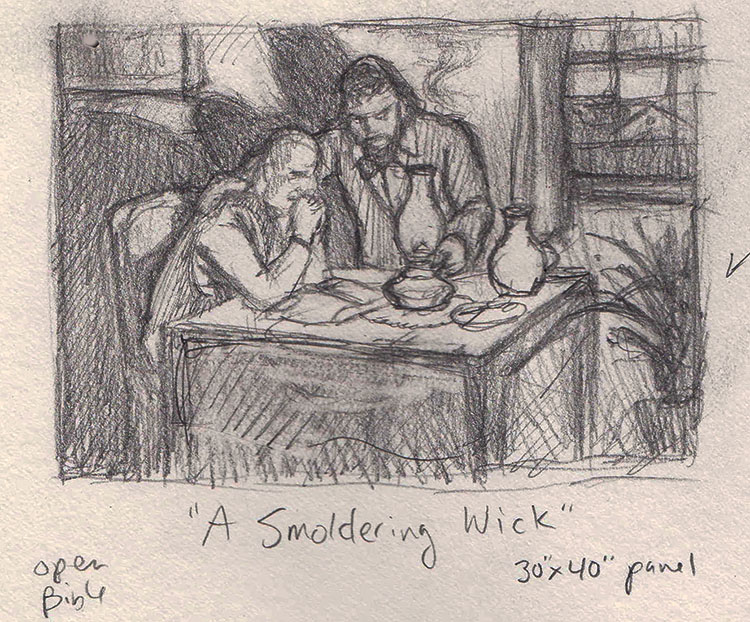
Original pencil sketch for “Smoldering Wick” by Matt Philleo
There were many distractions–a part time job, painting commissions, and my own procrastination. I wanted the painting to be just right. Waiting for the ideal circumstances, I delayed starting the project.
But finally, one day I realized unless I actually just took some steps to start the painting, it would never happen. So I asked my brother-in-law, Zach, to come over to my house for a photo shoot. Why a photo shoot? It’s not like I run a model agency! Here’s why…
When you are trying to do a realistic painting, you can’t just “invent” the realism.
At least I can’t. Maybe some can. But I think history bears out that the best realistic paintings of all time–like Rembrandt’s “Night Watch” or Caravaggio’s “Conversion of St. Paul” were painted using real-life models posed specifically for the artists to paint from.
In other words, they didn’t just paint from memory. They used a reference.
I am not comparing myself to either Rembrandt or Caravaggio, by the way. But their work inspires me.
One day then, Zach came over to my house, which I transformed into something like a theater stage or movie set. Well, one room at least. My wife gave me permission to do that for a few hours, as long as I put everything back in its place when I was done.
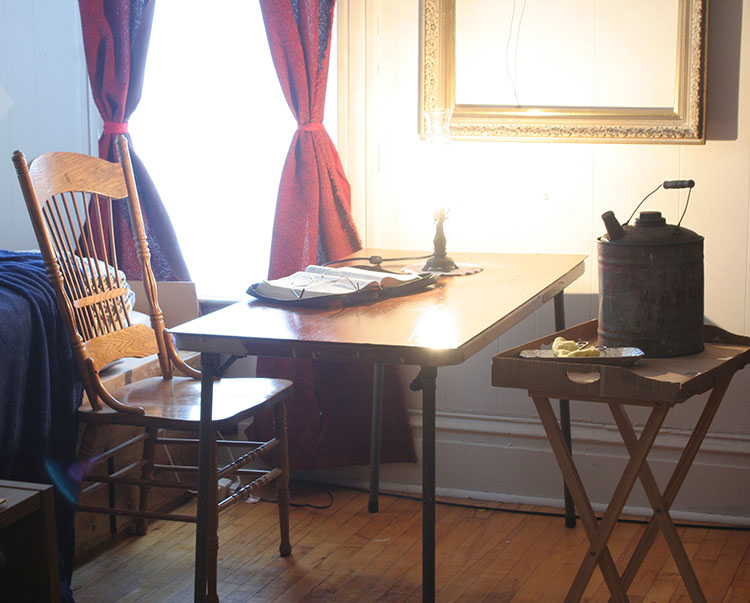
The “set” for “Smoldering Wick”
In the Victorian times, they had writing tables, simple and elegant. This is where the main character would be sitting. To recreate this look, I used a folded up plastic table and then made a fake top for it out of a piece of hardboard panel, which I painted to look like varnished woodgrain.
Then, I got my oil lamp ready, and made a fake doily (the knitted cloth things underneath that kept it from scuffing a table) for it out of paper.
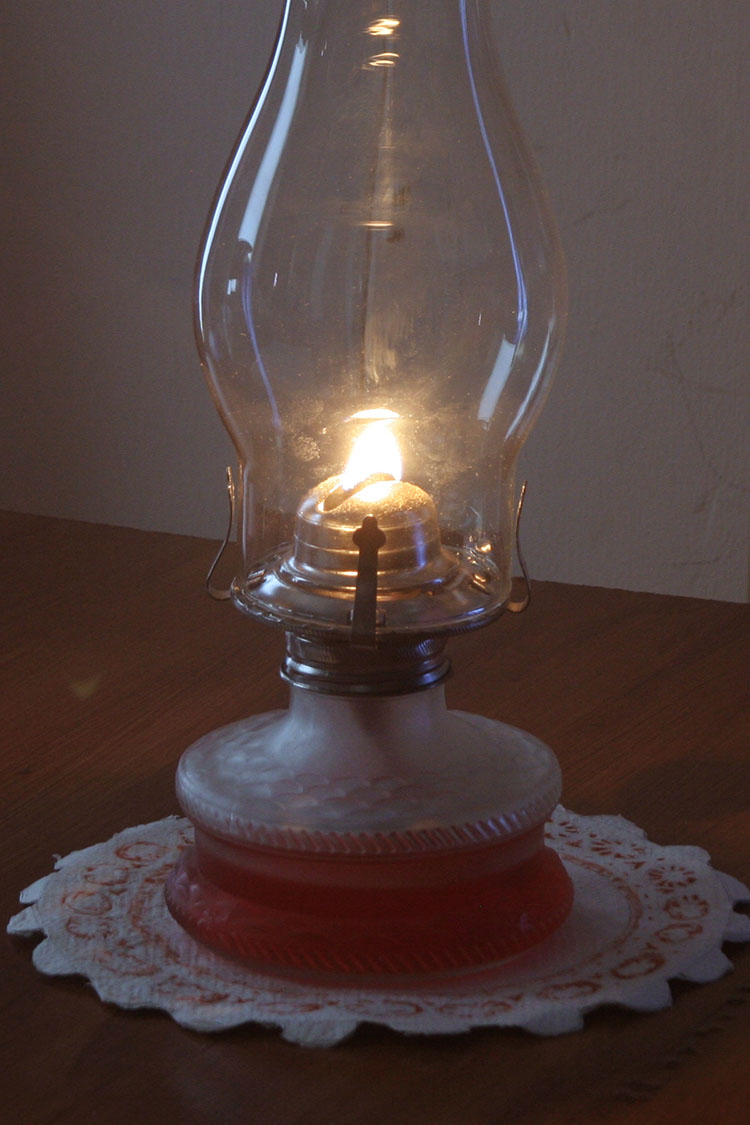
My trusty oil lamp with a homemade paper doily.
Interestingly enough, back during those kerosene-light days, the servant would come along and tend to the lamps in a house. He would bring a small foldable wooden tray on legs, carrying his supplies–a wick trimmer, a metal debris tray to hold the ash, a cloth to clean the chimney, and a can of kerosene. The servant would carefully trim off the burnt edges of the wick, raise it up higher, clean the soot off the chimney, and fill the lamp with fresh oil. The result would be a fresh flame that burns longer and brighter.
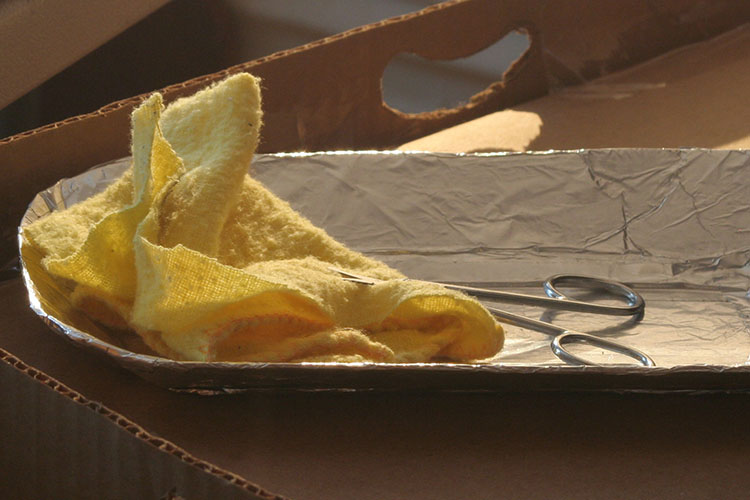
The wick trimming tray used by butlers in the 19th century
This symbolizes how God allows trials in our lives to “trim” the rough edges off of us.
Sometimes we hang onto to things that are worthless and keeping us from our full potential, from shining our light brightly. The wick trimmer is like the trial that cuts away the sins, the undesirable traits in us, and God employs this tool with precision, and masterful, loving care. His goal is not to hurt us, but to conform us to the image of Christ. And Jesus is the true Light of the World.
And to top it all off, Jesus said that when He would leave this earth, He would send the Comforter to us, that is, the Holy Spirit. In the Bible, the Spirit is often portrayed figuratively by oil.
For us today, the Holy Spirit is like that oil–an oil of gladness and joy– giving fuel to run on.
Without that joy, we will eventually burn out, even if we are busy doing great things.
Now, for the kerosene can, as a prop, I grabbed an old metal gasoline can from the shed.
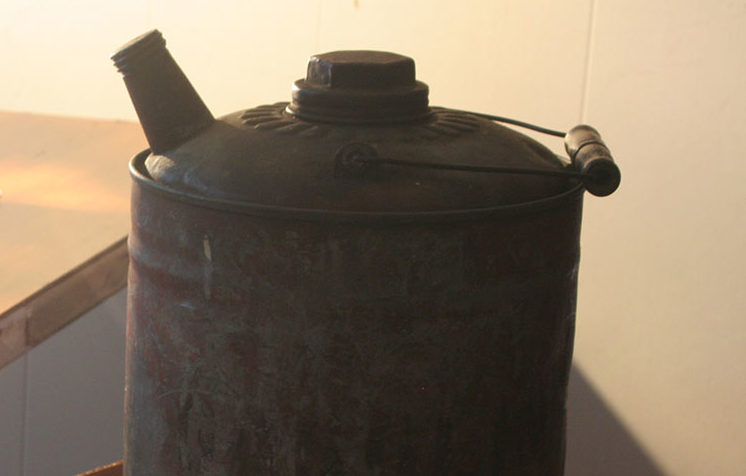
Old metal gasoline can used as a reference for a kerosene container.
I created this butler’s tray using a foldable TV-dinner tray covered with a cardboard box that mimics the sides of the antique tray. Of course, when I painted it in the painting, I made it look like wood rather than cardboard. But the cardboard structure was enough to paint by. The wick trimmer’s debris tray was cardboard covered with aluminum foil.
My brother in law had his tuxedo on, a perfect look for a victorian-era servant, and I had a dress shirt with a vest, and combed my hair in an old-fashioned style, and even shaved my beard to look like 1870’s style mutton-chop sideburns!
Next, we mounted my DSLR camera to a tripod and snapped a series of photos. In all, we probably shot about 200. It takes a lot of photos just to get a few that turn out. With a low aperature and slow shutter setting, we were able to capture the light from the lamp very well. As long as we didn’t move much.
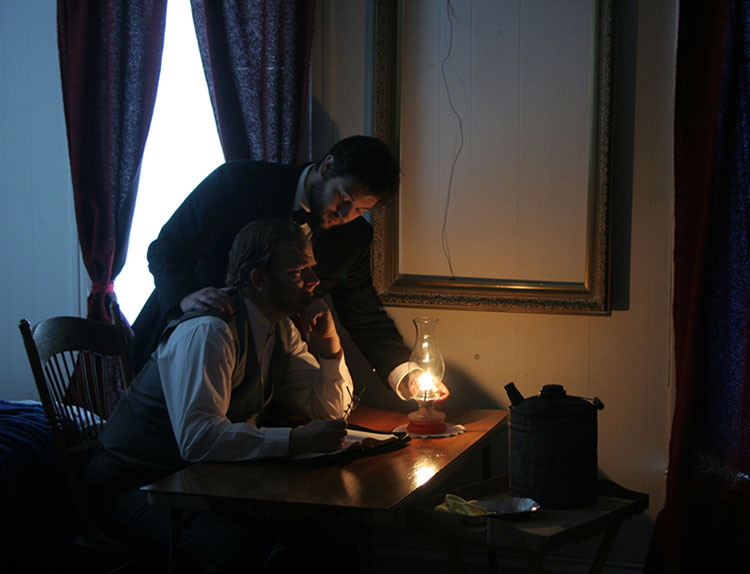
Zach Couture and Matt Philleo posing for the photo references used in the painting “Smoldering Wick,” 30 x 40, 2016, acrylic on canvas
I tried to think of the sadness of this man, and how I felt when I was discouraged.
As I played the part, some tears actually formed in my eyes, and I knew that was just the look I wanted in the painting to convey the despair, the loneliness, the longing of hope that he experienced just before the light of the truth dawned upon him.
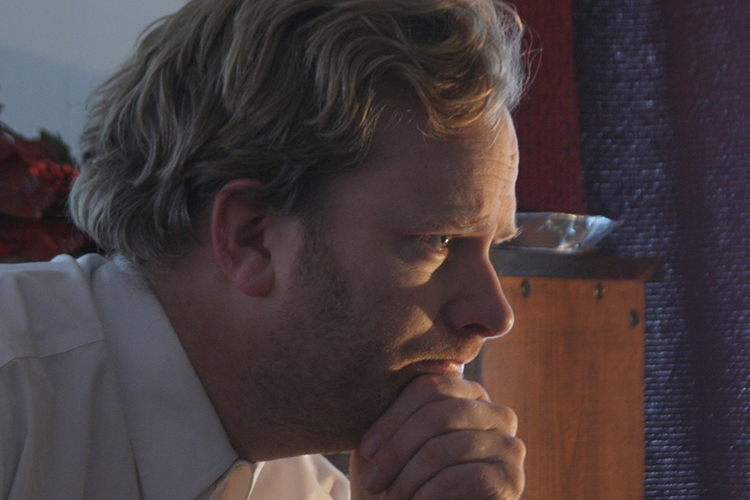
Matt Philleo posing for “Smoldering Wick”
Zach did a fantastic job in posing for the servant. He portrayed a genuine compassion in both his facial expression, and his body language. The servant was to symbolize Jesus Christ without actually looking like the typical long-haired Jesus that we are so familiar with in the Western World.
Jesus is the suffering servant.
He was tempted in all points like we are, yet without sin. He is acquainted with sorrows, and knew what it was like to have people reject Him, hate Him, and ultimately kill Him. And so He can sympathize with our weaknesses with true compassion and mercy.

Zach Couture posing in an interesting but unused photo reference for “Smoldering Wick”
We won’t discover the fullness of Jesus, though, just by looking at a picture of Him. Although that may help, the true picture of Jesus is formed in words–the Bible.
When we read about all that He did for us on the cross in taking our sins upon His shoulders and rising again to give us new life, it fills us with joy (if we receive it) and what was darkness and despair now turns to light and hope. I see my role as an artist to highlight, or draw attention to the truths already proclaimed in the Word of God. It allows me to speak and share with people that may never read a Bible or are turned off by institutional Christianity.
Zach and I spent the better part of the afternoon doing the photo shoot, and I ended up with some wonderful images to work from as references. The last step at this stage was to go through the images on my computer and select the best ones to use for the actual painting.
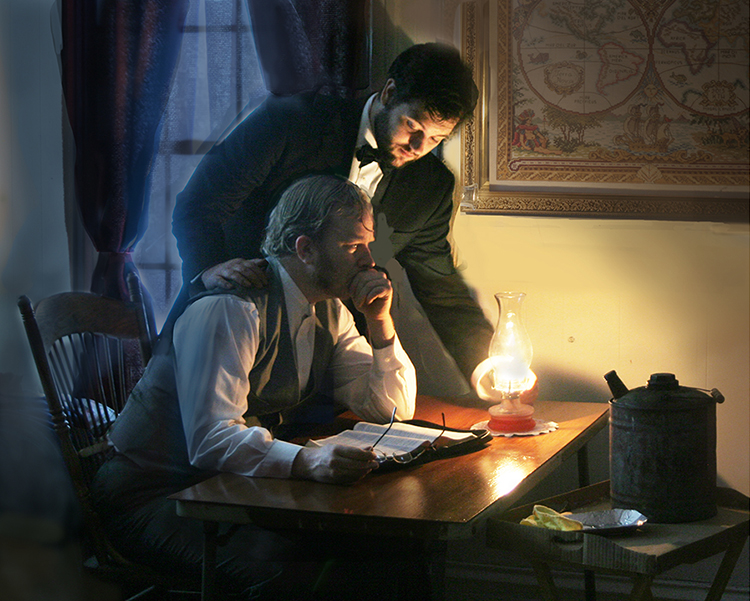
Main photo reference for “Smoldering Wick”
By the way, you may have seen already on Facebook, but I do have prints of “Smoldering Wick” available for sale now. If you would like to purchase a copy, I will sign it and put it in a distinguished black and gold mat, with a clear plastic sleeve. This is a special limited edition printed up locally by Eau Claire Printing Co.; I am only making 50 prints total. I would love for you to have one! Here is more information on how to order.
In my next post, I will share more on the process of how I actually painted “Smoldering Wick…”
Share Your Thoughts!

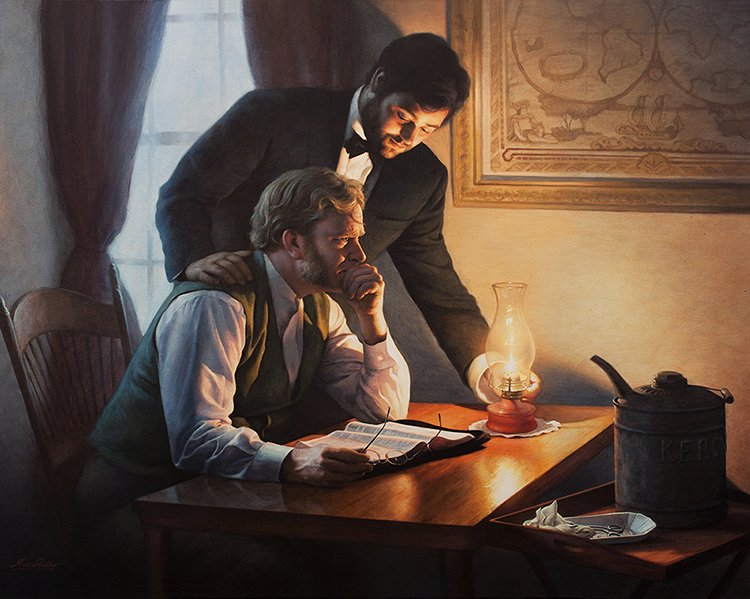

Thank you for sharing this, Matt.
It’s very inspirational both in life and in the artwork. I do landscapes and now portraits, but in my younger days I also dreamed of illustrating for novels, especially for the young teens and early adolescents. I never did get to that point but your “The Smoldering Wick” shows that we don’t always have to wait for the novel to paint the illustration. Sometimes the “Book” has already bee written.
I love how you brought this all together.
Again, Thank you!
Thank you for sharing your journey to paint this beautiful painting. Thank you for sharing your life & faith with all of us. You bless our lives.
This is great Matt! Sometimes when we look at the finished art we feel that there is no way we could do something like that! But you are showing us that there are possibilities that we haven’t even thought of and with your generosity in sharing the journey maybe we can do something like that!! Thank you so much!